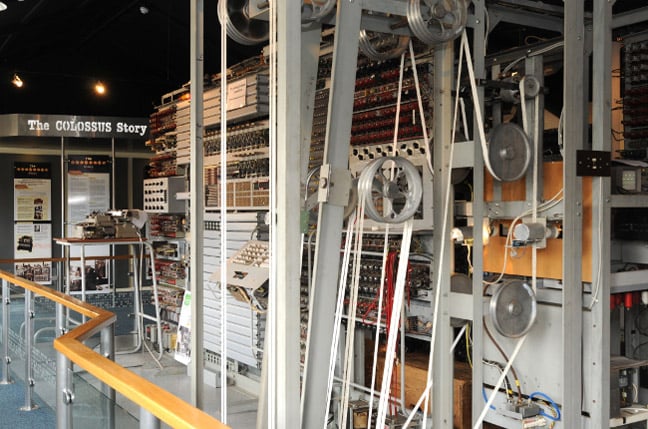Headline: National Museum of Computing Celebrates 80 Years of Colossus II with Major Renovations
The National Museum of Computing (TNMOC) has recently completed extensive renovations to Block H at Bletchley Park, aiming to enhance the preservation of historical computing artifacts while celebrating the 80th anniversary of the Colossus II computer. These renovations not only protect the building from the elements but also aim to create a more engaging experience for the increasing number of technology enthusiasts and historians visiting the site.
A Historic Venue Revived
Location: Bletchley Park, UK
Date of Original Occupation: September 17, 1944
Block H, originally constructed as an annex to the now-demolished Block F, played a pivotal role during World War II by housing six Colossus II computers. These machines were critical for deciphering the Lorenz-encrypted (Tunny) messages exchanged between Adolf Hitler and his generals. According to TNMOC, the information extracted from these decrypted messages is credited with shortening the war by several months, thus saving tens of thousands of lives.
In celebrating the monumental contributions of the Colossus II and its legacy, an investment of over half a million pounds was made to renovate Block H. The upgrades include a newly constructed roof to mitigate the previous issues of leaking, which often left staff scrambling for buckets to catch drips during rainstorms.
Revitalizing Tech History
The renovation not only safeguards the physical structure but also revitalizes Bletchley Park’s technological heritage. "The recent renovations serve as a reminder of our incredible past, while we also look forward to offering a robust educational experience for future generations," stated a museum spokesperson at a recent celebration event.
Visitors can now find a working replica of the Colossus II inside Block H, placed precisely where an original machine once operated. Designed by Tommy Flowers and his team of engineers from the General Post Office (GPO), the original Colossus machines were built between 1944 and 1945. After the war, Block H transitioned into a training facility for GPO employees. The refurbishment was partially funded through the Post Office Remembrance Fellowship, underscoring its cultural significance.
Interactive Exhibitions and Activities
In conjunction with the renovations, TNMOC is currently hosting an exhibition that details the development and operation of the Colossus hardware, featuring audio accounts from individuals involved in its creation and operation. This exhibition showcases various artifacts, providing an in-depth look into the historic context behind the Colossus machine.
Another exhibition highlights the entry of Digital Equipment Corporation into the UK market. With working PDP and VAX computers on display, this area invites interaction and participation from visitors, supported by enthusiastic volunteers ready to demonstrate the technologies in action.
The museum’s large systems gallery features a diverse array of ICL hardware, presenting a realistic depiction of a mainframe environment indigenous to the 1970s era. Visitors can interact with a striking orange terminal running "Colossal Cave Adventure," a testament to the significant digital landscape of the past.
A Gateway to the Past and Future
The National Museum of Computing, a treasure trove for computing enthusiasts and local historians, serves as an essential stop for anyone eager to understand the evolution of technology. "It’s crucial for us to bridge the gap between generations by showcasing our computing heritage. Young visitors can gain insight into what pioneers of technology worked on, which can spark their interest in the field," remarked a museum curator.
With the renovation of the roof of the Tunny and Colossus galleries and the addition of a new meeting room, TNMOC is committed to ensuring that both the building and the artifacts within will remain accessible for years to come. This blend of preservation and innovation marks a significant milestone in the museum’s ongoing commitment to celebrate the achievements of technological pioneers.
As TNMOC continues to unveil its upgraded facilities and exhibitions, technology enthusiasts and the general public alike are encouraged to engage with the stories and legacy of computing.
What are your thoughts on the significance of Bletchley Park in the development of modern computing? Feel free to share your comments below or join the conversation on social media!
For further reading about the contributions of Bletchley Park to modern computing, visit TechCrunch, The Verge, or Wired.


